- Watch The JD Rucker Show every day to be truly informed.
When the Great Ice Storm of 1998 hit, it left millions without power for days, weeks, or even months. The crisis affected northern New York and Maine in the United States, and Eastern Ontario, Southern Quebec, Nova Scotia, and New Brunswick in Canada. Canadian cities Ottawa and Montreal completely shut down, and the storm caused the largest deployment of the Canadian military since the Korean War.
Article cross-posted from our premium news partners at The Epoch Times.
At the time of the storm, Yves and Velvet Rollin were living in Guelph, Ontario. They were not directly affected, but they quickly realized just how helpless they would have been had their power been cut for any length of time. Although they had a wood stove in their home, it was inaccessible in a basement rental apartment.
“It was a wake-up call,” said Velvet. The couple was already thinking about moving to the countryside, and was interested in alternative housing and being more self-sufficient. The ice storm propelled them to make a radical and adventurous decision. In 1999, they bought a 40-acre property in Bruce County, Ontario that had no electricity, and started planning a self-built, off-grid home.
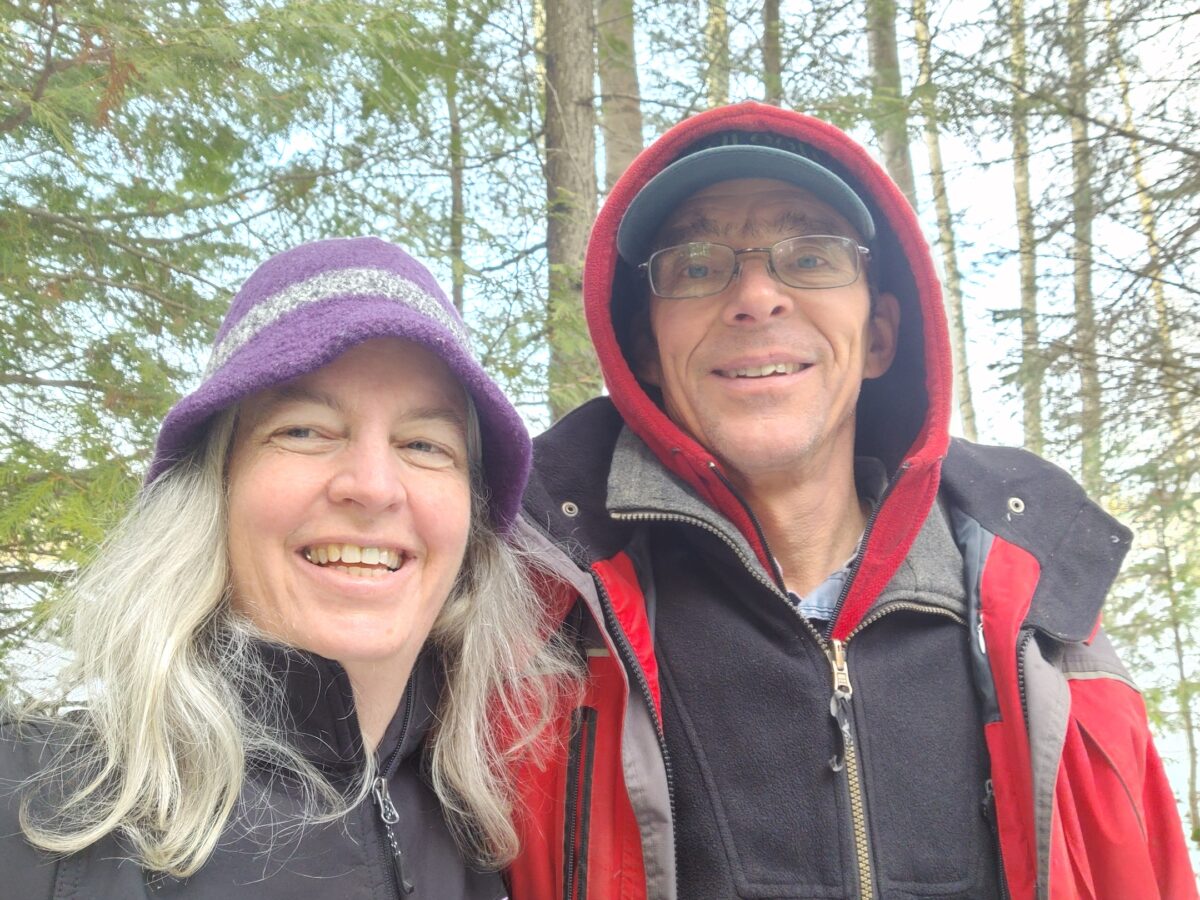
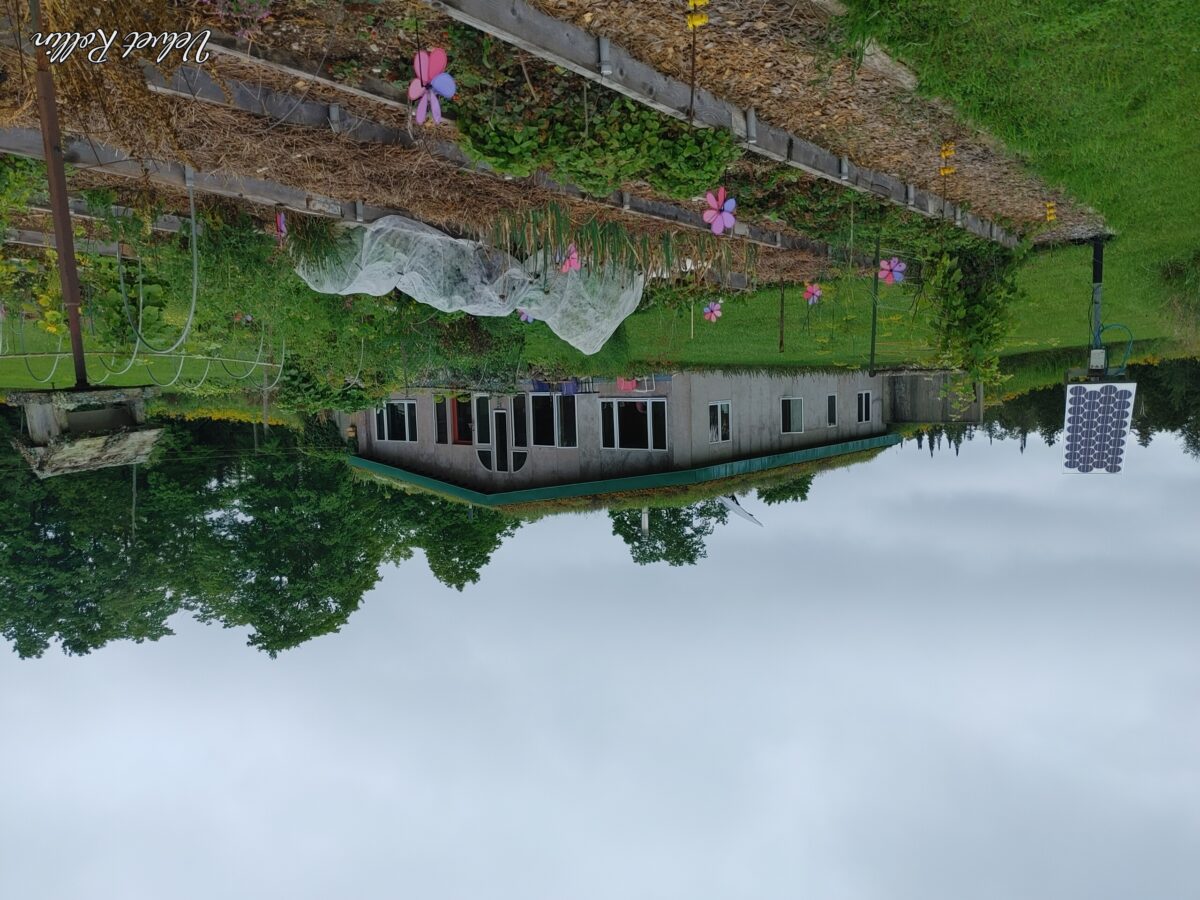
Powering Up
“Living off-grid means you’re not tied into the power system, so you have to rely on your own power generation,” explained Velvet. That means, Yves added, “You have to be willing to make some choices. It means modifying your behavior. We don’t have a fridge; we do have a microwave, but we only use it in the summertime when it’s really sunny. We don’t have a clothes dryer.”
They bought a trailer and moved onto the property with their two sons, aged 5 and 6. “That summer in the trailer was the best summer ever,” said Velvet. They lived in the trailer from 2000 to 2002, using materials for the prospective house to insulate the trailer in the winter. Camping on the property was educational for them as well: “We thought we were going to go all solar. That first winter, there were only eight full-sun days, and we knew that we could not do all solar power.”
Yves and Velvet use a combination of wind and solar power. They have a 1-kilowatt turbine, so small that it isn’t sold anymore, Velvet said. It doesn’t produce a lot of power, and it doesn’t save power, though it can be used to charge batteries.
“The advantage of a wind turbine is it can run 24 hours a day,” Velvet said. “Any stormy weather is awesome for us. In the winter, we’d see how strong the wind was and be like, ‘Yes! We can run whatever we want tonight! We can watch a movie!’”

Over the years, solar panels have become a lot cheaper, and they now have 10 solar panels, producing about two kilowatts. “On a sunny summer day, we have to turn some of them off,” said Yves. “Too much power can overload the batteries.”
The batteries allow them to run the basics if they go for two or three days without power. “We live in such a way that we can easily cut back,” said Velvet. “We use a blender most days; if it’s a low power day, we don’t. We just adjust our power usage based on the weather. It’s a pretty cool way to live.”
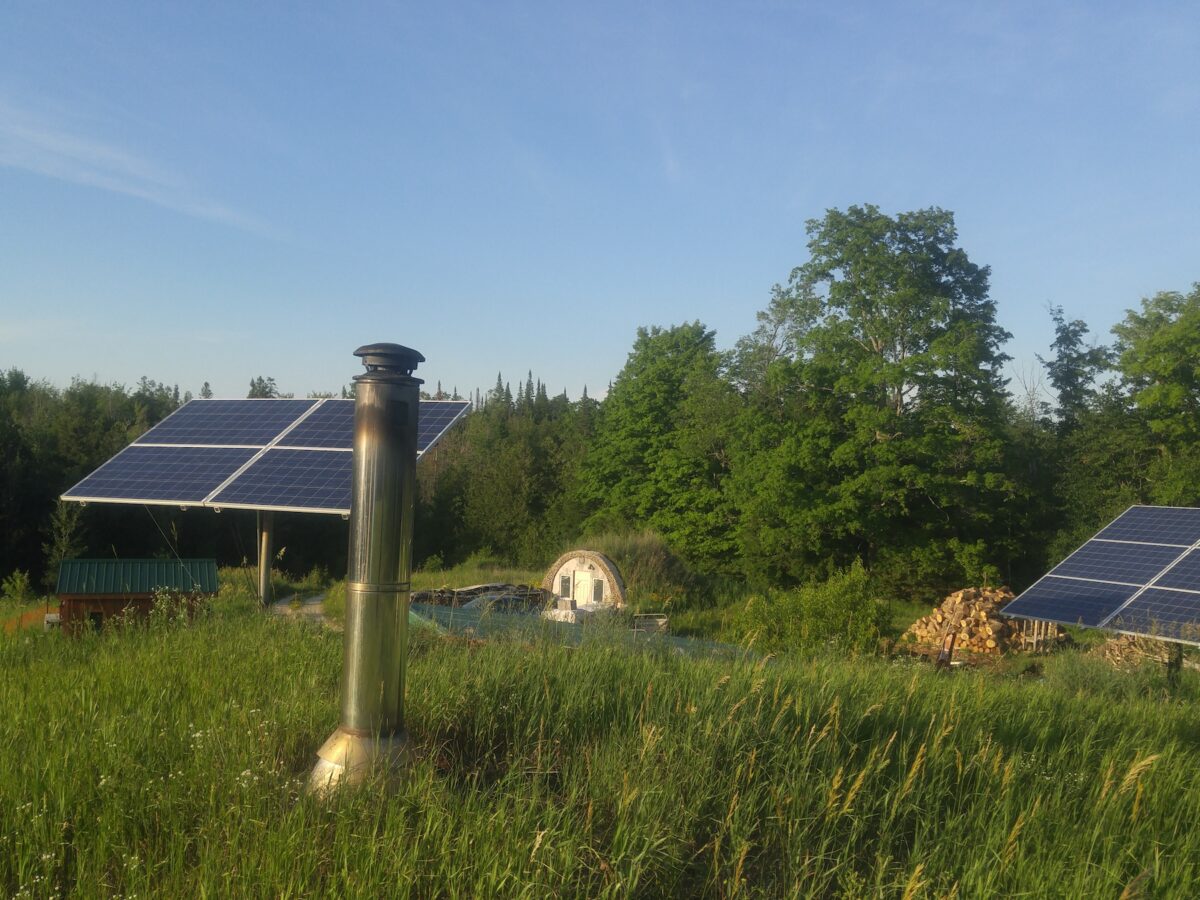
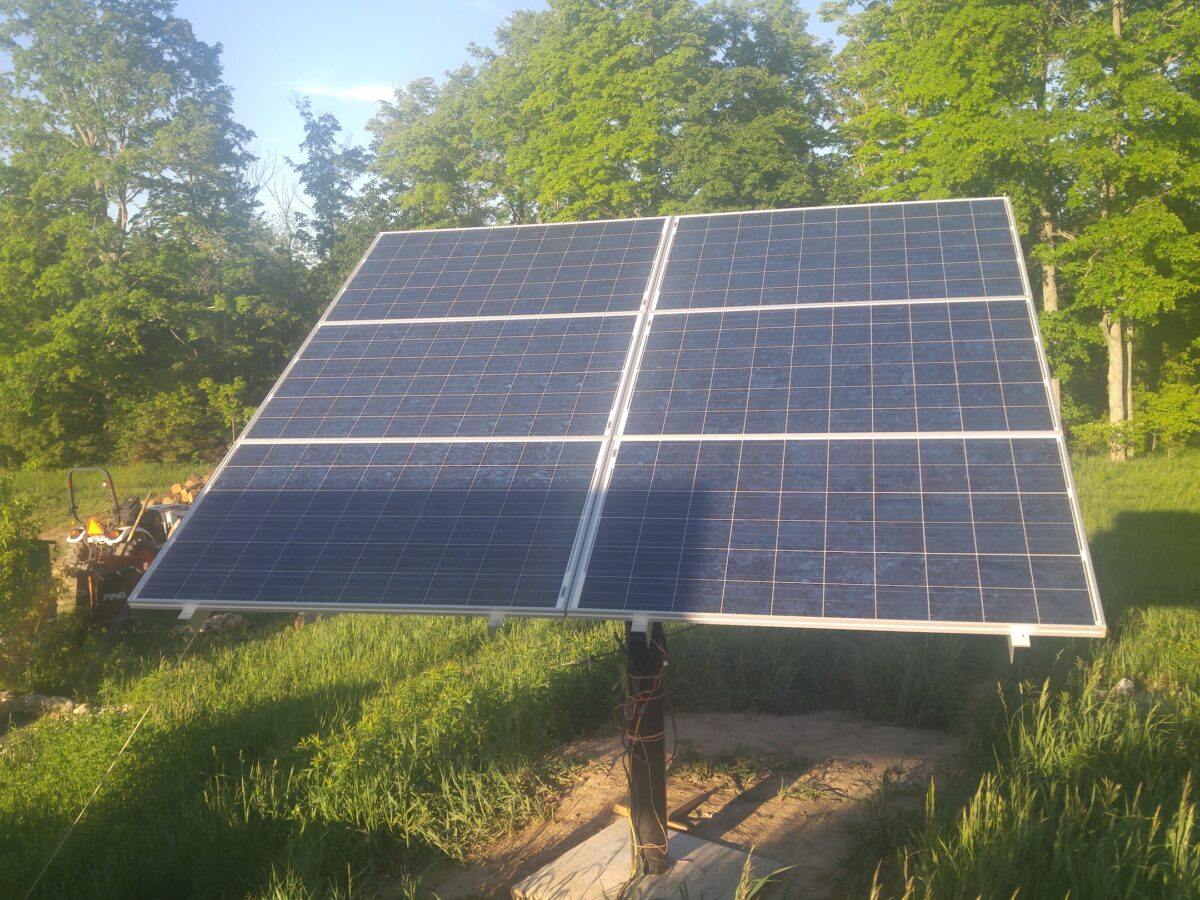
The fridge was the “‘make it or break it device,” according to Yves, when they decided to go off-grid. They had three choices: Buy $20,000 worth of solar panels to provide enough power to run a fridge (based on the cost at the time, in 2002), buy a $6,000 propane-fueled one that would have to be vented through the roof, or live without one.
“We have an ice-box instead,” said Velvet. “At the time you could buy ice blocks for $2.50, and we needed them from April until the end of October. I was working and driving through town each day, so we didn’t need to worry about storing meat; I bought meat the day we were going to cook it. We stored milk, cheese, and things like that.”
They still don’t have a fridge, but they did recently get a freezer. Freezers use less power now, and the Rollins have enough power in their finished home to run one. Ice blocks are less reliably available to buy, so Velvet makes ice in the freezer and also uses it for storing other goods. The ice box lives in the root cellar, which stays just above freezing in the winter and does not get warmer than 64 degrees in summer.
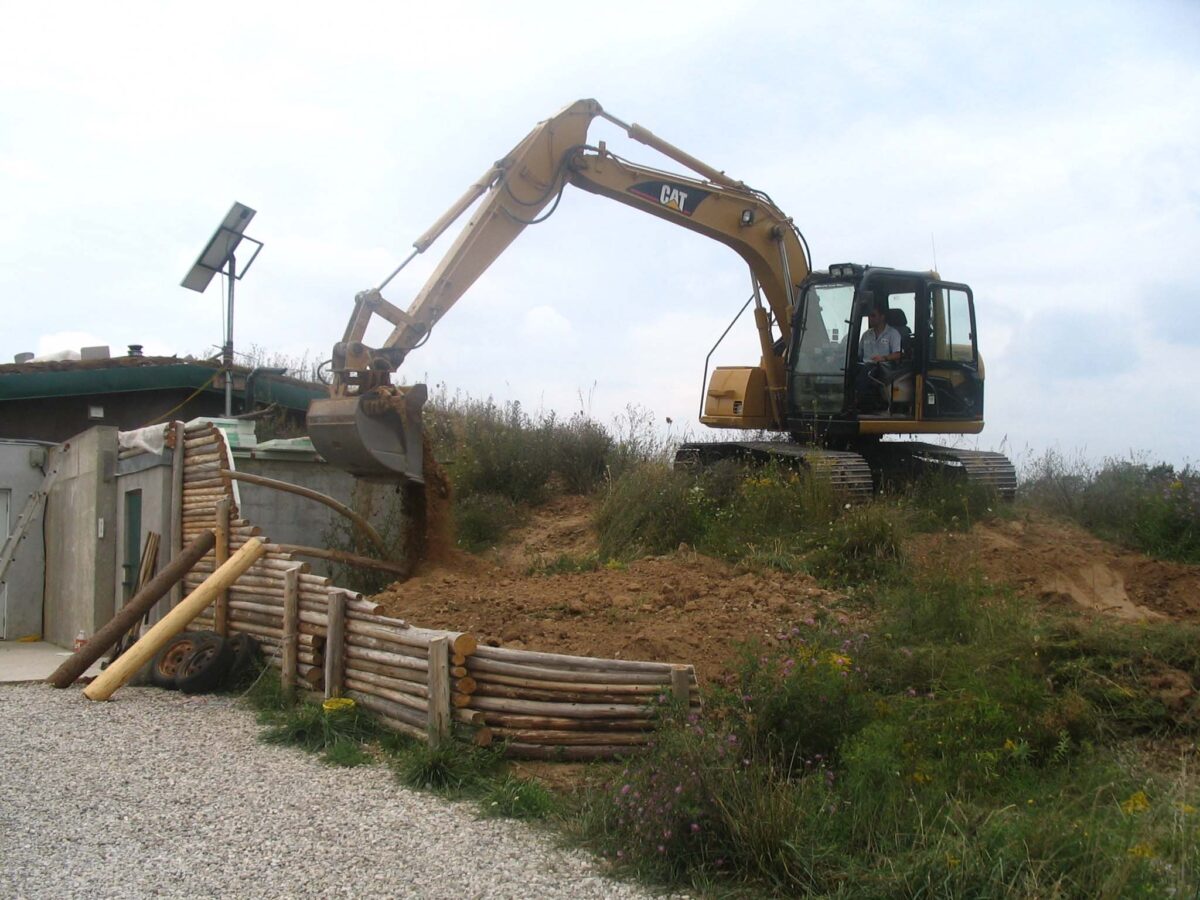
Gardening and Food Storage
Velvet is a food storing and canning expert, and she grows a large vegetable garden each year to help with their annual supplies. She and Yves had a garden when they lived in the city, so they knew a bit about growing vegetables before they started their off-grid adventure.
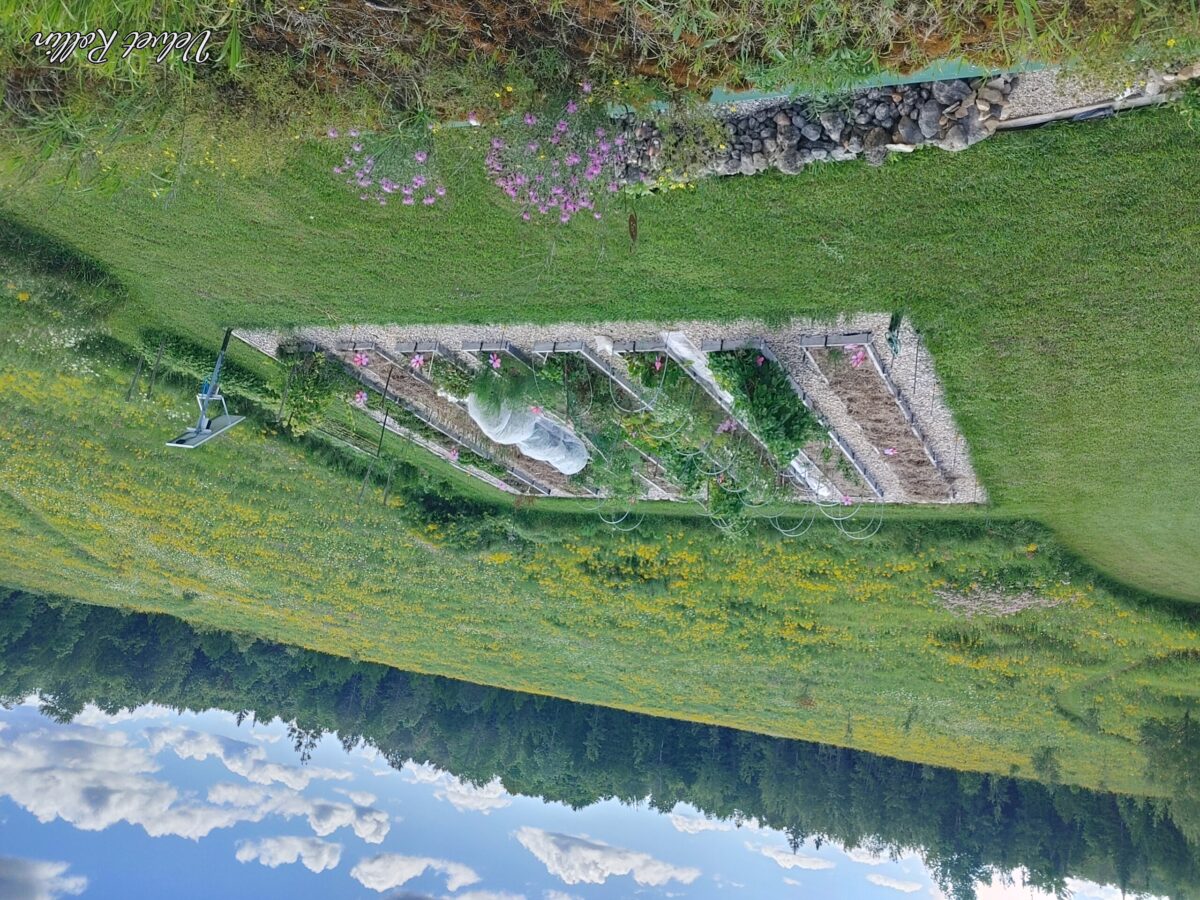
Velvet read in a Country Living book that the best thing you can do when breaking new ground for a garden is to have pigs on the land the year before you start. On her off-grid property, her garden is 40-by-46 feet, and she had four piglets on that spot.
“They did a lovely job of the ground, and their little hooves loosened it up as well,” she said. The key, she said, is to not feed the pigs any supplemental food, but to let them root around and dig up all the roots that have been growing there for years.
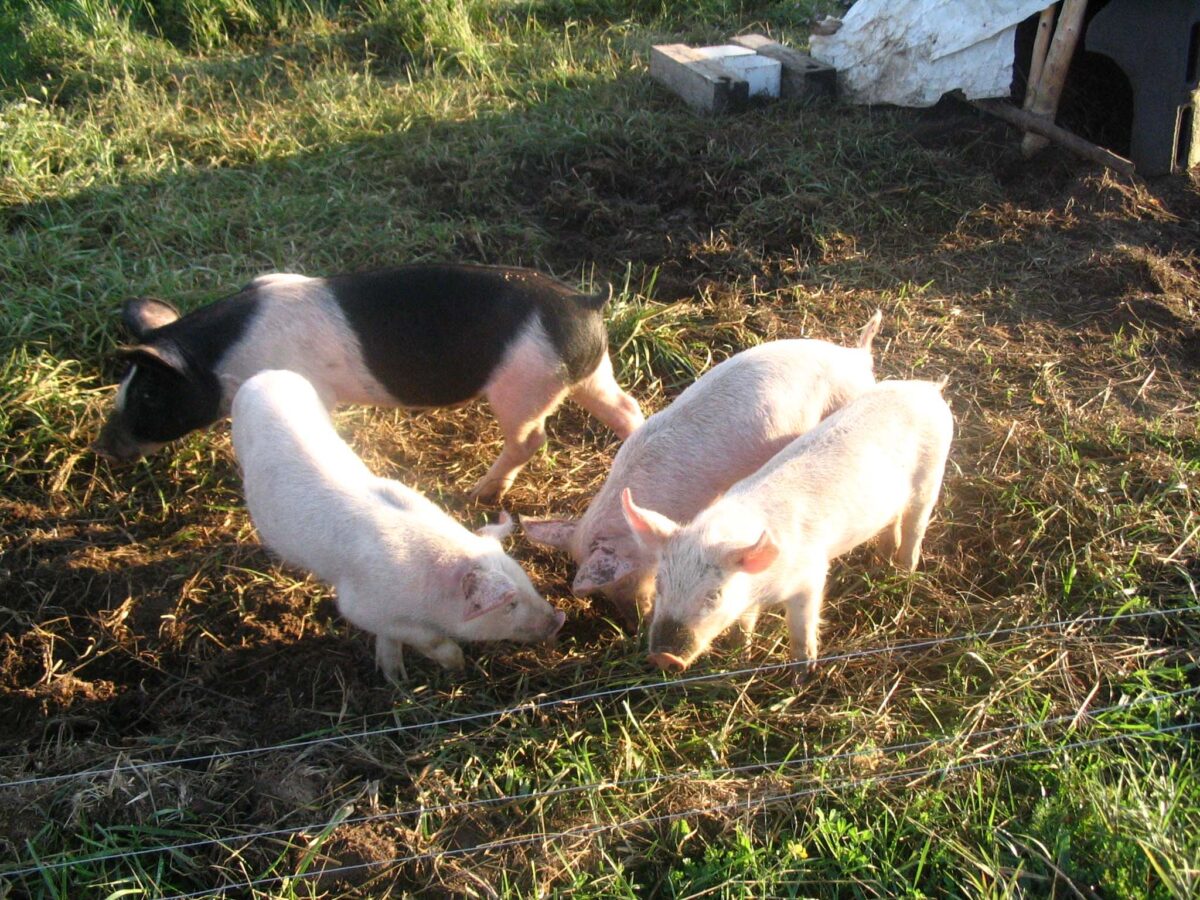
The Rollins have eight rows of raised beds, and they conservatively estimate that their growing season is reliable between June 6 and September 1. She rotates her crops annually to give the soil a break, and she enthusiastically preserves as much as she can.
Her goal is to have one year’s worth of food storage. When the children were younger, a fun adventure was to send them “shopping” in the storage room to find ingredients for a meal.
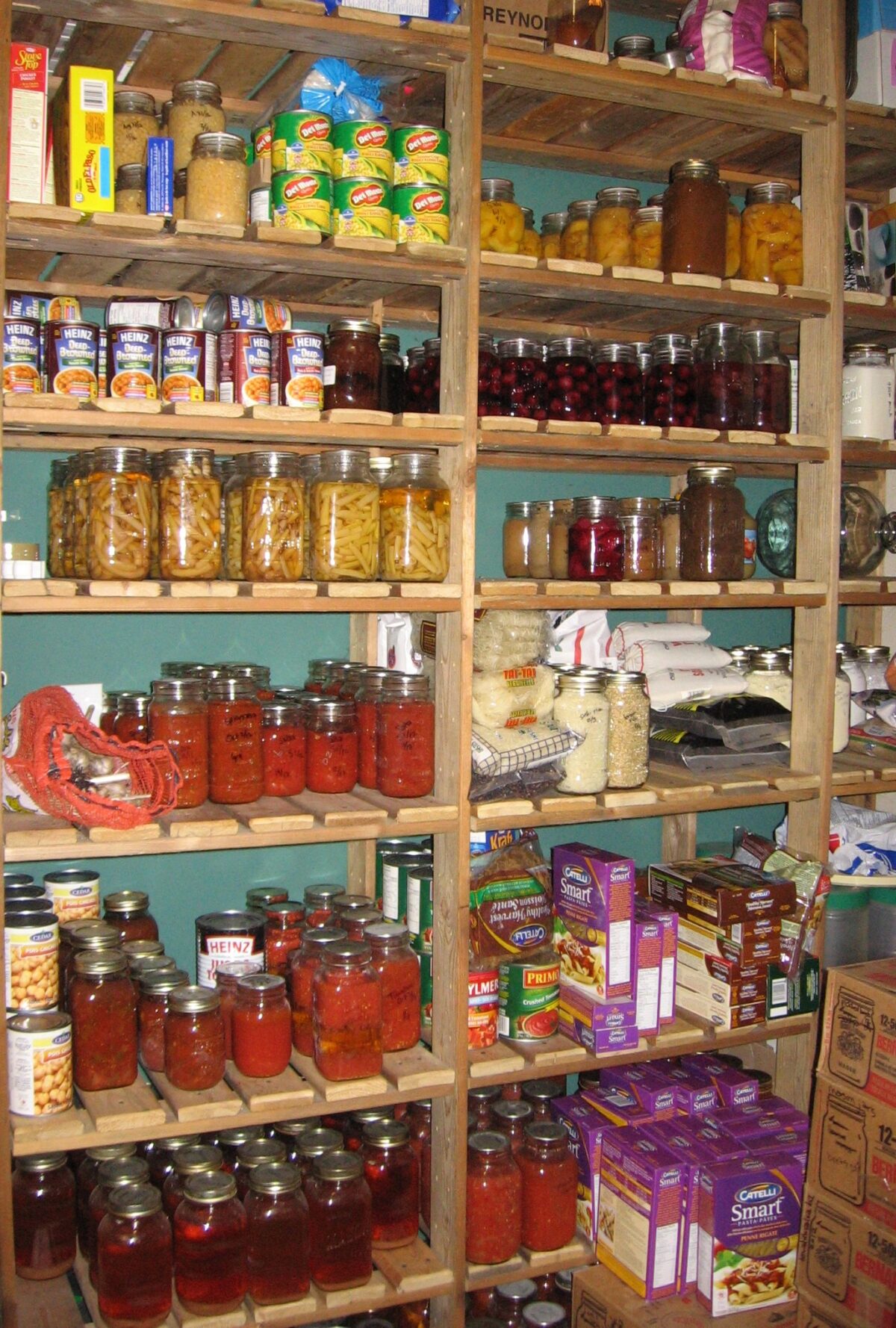
Raising a Family
Yves and Velvet built in chunks, as they had the money. They would buy $10,000 of materials, build, then pay off the line of credit and start again. Velvet said, “If you’re building your own house, there can be a lot of stress. So we knew we had to take our time and not put the pressure on,” she said.
“We learned to enjoy our children, to grow up with them. You’d like to finish the roof today, but you don’t have to.”
The house is earth-bermed, which means that earth is banked around and on top. As a result, the house appears to be built into a hill, with grass growing up and over it. They used to toboggan off the roof of the house in the winter, and in the summer they lay on the roof and read books.
One of Velvet’s best memories of the summer when they began to build the house is lying on the roof and reading “Harry Potter” to the boys.
“We read that whole series when we were building the house, and what a blessing that was. It was amazing,” she recalled.
From that first summer of building onward, the children were brought up to enjoy lazy days reading in a hammock, making mazes and forts with building materials, watching the patterns of weather and wildlife, and focusing on experiences rather than objects. As they grew up, their birthday parties were events that all their friends looked forward to. Instead of gifts, friends were asked to make something creative, which led to the sharing of many great desserts.
“Our children were famous for their gigantic cookie gifts for their friends,” said Velvet. “Not only the child whose birthday it was, but all of their friends who were going to the party, would ask if our children were bringing a giant cookie. They were always a hit!”
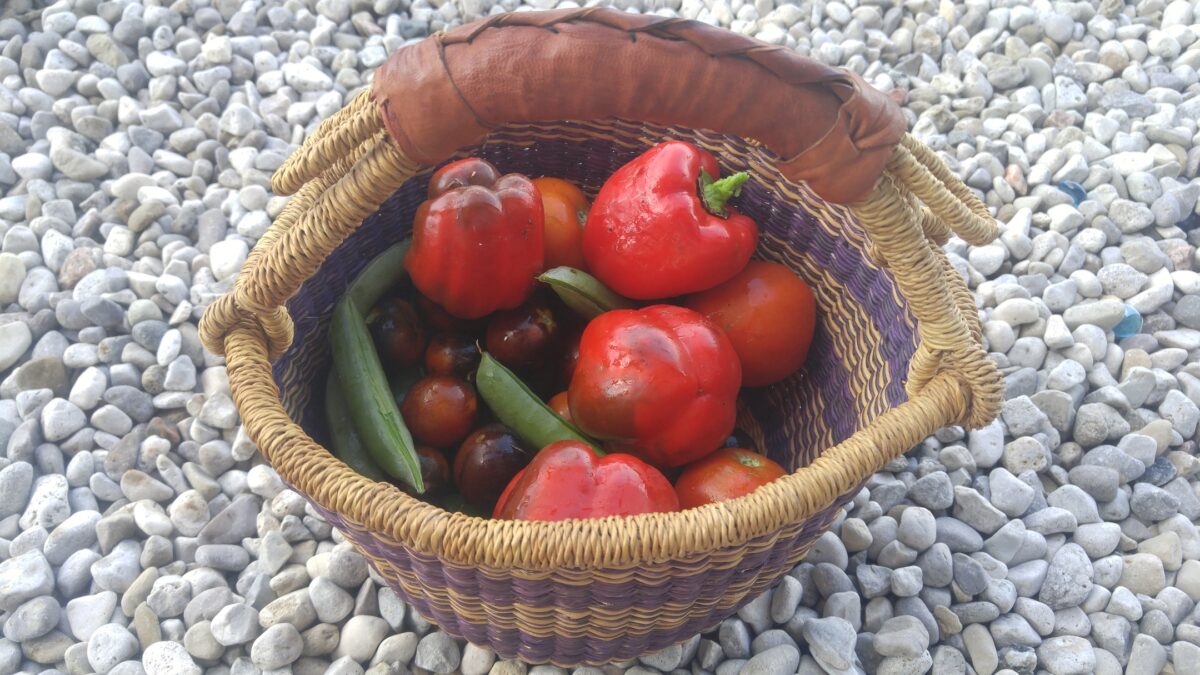
Lessons Lived and Learned
The Rollins live about 20 minutes from the nearest town, and once they felt a bit off-map as well as off-grid. One night in 2011, Yves and Velvet were out for the evening, and as they returned up their long driveway, they saw an orange glow ahead. The generator shed was on fire, along with two years’ worth of stored wood for the wood stove.
“It took a long time for the firefighters to get there,” said Velvet, “because they couldn’t find us! They found the end of the driveway but couldn’t see anything from there. They didn’t want to risk taking a truck down and getting stuck.” Eventually, Velvet drove up the driveway to meet the firefighters and guide them back to the house.
“Now the generator is in a steel shed with a concrete slab, and the propane tank is further away from the house,” said Yves. “We learned a few things!”
Growing up off-grid was a challenge for both of their sons, who missed living closer to their friends and were often frustrated. Velvet also acknowledged that “we did not realize our children found it as hard as they did when they were children—the power and water use issues.” The fire in the generator shed was a direct consequence of the kids trying to have access to more power. However, now that they are grown and living in cities, both their sons say that they are more careful in their use of water and power than their peers.
It’s been a life of learning, experimenting, and figuring things out along the way. From observing animal prints in the snow while walking to the children’s bus stop on winter mornings, to living without a kitchen sink before plumbing could be installed in the kitchen, to building an earth-bermed bunny barn for raising rabbits, to realizing that their own dog was the culprit damaging the garden, the family has watched the weather, adapted their lives, learned to be creative and self-sufficient, and taken their journey one day at a time.
-
The Importance of Prayer: How a Christian Gold Company Stands Out by Defending Americans’ Retirement

Tips From an Expert Gardener and Food Preserver
Gardening
One of Velvet’s top tips for growing vegetables is rotating crops each year, to give the soil a break. She also advises succession planting for fast-growing and fast-ripening crops, such as peas, carrots, and lettuce.
She recommends considering the amount of space available for planting and the amount of space required by a particular vegetable. For example, she does not grow potatoes because they take up an enormous amount of growing space. Also, she says, they are readily and cheaply available from local farmers.
Grow what you love and you know you will eat. She does not grow broccoli because “it’s ready all at once and I can’t eat it that fast.” On the other hand, the Rollins love garlic and grow “tons of it.”
Finally, try to guard and protect the garden against pests, which can include critters and beetles. Yves uses what he calls “whirligigs,” small windmills, to ward off chipmunks and rabbits, and Velvet covers one row of plants that are prone to beetle infestations. Try, also, to be sure that it’s not your own dog wreaking havoc when your back is turned!

Food Storage
“Store what you eat.” There is no point to having loads of tinned peaches on hand if no one in the family eats them. “Make a list of your family’s top meals and start storing ingredients for those,” Velvet advised.
“Eat what you store, otherwise you are wasting your money and food others would love to have access to. In the past some people bought food, stored it for a rainy day, but having had no rainy days, never ate it. In 30 years they opened it to discover that some of it had long gone bad.” Therefore, Velvet says, rotate your food.
“Slow and steady wins the race. As Covid-19 taught us, I hope, even when stores are struggling to bring in more food, more food will arrive. If you are starting to store food today, start slow and do what you can afford to do—instead of buying one can of tuna on sale, buy five cans.” Velvet advises against listening to fear-mongering messaging, as that can lead to feelings of overwhelm, which can make you shut down. Take things gradually, and don’t pressure yourself or your bank balance.
“Store some comfort foods and junk food–or ingredients to make your favorite junk foods.” Even in hard times, perhaps especially in hard times, people need an occasional indulgence.
“Travel this path with others and make it fun! If you make it fun, you will do it!” There are Facebook groups, for example, dedicated to the subjects of food storage, canning, dehydrating, and more. You can connect with a community of people sharing tips, ideas, success stories, and support. Velvet said, “Everyone I know personally who is storing food is doing so for more than themselves—they are doing it for family members, neighbors, and friends. Most of us intend to help take care of others in larger emergencies.”
Controlling Protein Is One of the Globalists’ Primary Goals
Between the globalists, corporate interests, and our own government, the food supply is being targeted from multiple angles. It isn’t just silly regulations and misguided subsidies driving natural foods away. Bird flu, sabotaged food processing plants, mysterious deaths of entire cattle herds, arson attacks, and an incessant push to make climate change the primary consideration for all things are combining for a perfect storm to exacerbate the ongoing food crisis.
The primary target is protein. Specifically, they’re going after beef as the environmental boogeyman. They want us eating vegetable-based proteins, lab-grown meat, or even bugs instead of anything that walked the pastures of America. This is why we launched a long-term storage prepper beef company that provides high-quality food that’s shelf-stable for up to 25-years.
At Prepper All-Naturals, we believe Americans should be eating real food today and into the future regardless of what the powers-that-be demand of us. We will never use lab-grown beef. We will never allow our cattle to be injected with mRNA vaccines. We will never bow to the draconian diktats of the climate change cult.
Visit Prepper All-Naturals and use promo code “veterans25” to get 25% off plus free shipping on Ribeye, NY Strip, Tenderloin, and other high-quality cuts of beef. It’s cooked sous vide, then freeze dried and packaged with no other ingredients, just beef. Stock up for the long haul today.






